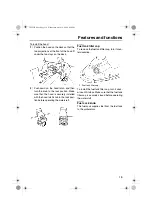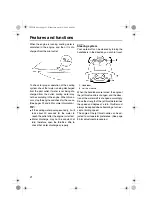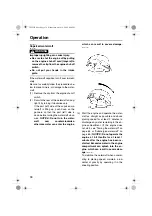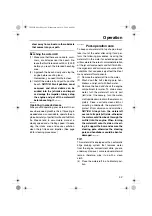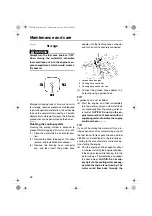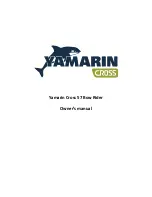
Operation
32
EJU32730
Operation
WARNING
EWJ00510
Before operating your watercraft, become
familiar with all of the controls. Consult a
Yamaha dealer about any control or func-
tion that you do not fully understand. Fail-
ure to understand how the controls work
could cause an accident or prevent you
from avoiding an accident.
EJU32752
Engine break-in
NOTICE
ECJ00430
Failure to follow the engine break-in pro-
cedure could result in reduced engine life
or even severe engine damage.
The engine break-in period is essential to al-
low the various components of the engine to
wear and polish themselves to the correct op-
erating clearances. This ensures proper per-
formance and promotes longer component
life.
(1) Fill the fuel tank with fuel in a fuel-to-oil ra-
tio of 25:1.
(2) Launch the watercraft, start the engine,
and then board the watercraft. (See page
32 for engine starting procedures.)
(3) Run the engine at the lowest possible
speed for 5 minutes.
(4) Gradually apply throttle to 3/4 or less.
(5) Operate the watercraft at 3/4 throttle or
less for the first tankful of fuel.
(6) Fill the fuel tank once more with fuel in a
fuel-to-oil ratio of 25:1, and then proceed
with normal operation.
(7) After break-in, fill the fuel tank with fuel in
a fuel-to-oil ratio of 50:1.
EJU32820
Launching the watercraft
When launching the watercraft, make sure
that there are no obstacles around you.
After the watercraft is in the water, turn it
around so that the bow faces the direction you
wish to go. Start the engine, and then slowly
move away from the launching area. If there
are waves, someone should make sure that
the watercraft is not pushed into the trailer af-
ter launching the watercraft.
EJU32832
Starting the engine
(1) Remove the fuel tank filler cap to release
any built-up pressure in the fuel tank due
to fuel expansion, and then install the fill-
er cap.
(2) Launch the watercraft in water free from
weeds and debris and at least 60 cm (2 ft)
deep from the bottom of the watercraft.
NOTICE:
Never operate in water that is
less than 60 cm (2 ft) deep from the
bottom of the watercraft, otherwise
pebbles or sand could be sucked into
UF2F21E0.book Page 32 Wednesday, April 16, 2008 8:40 PM

